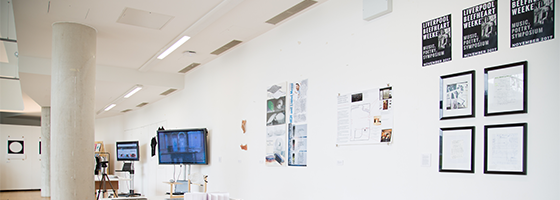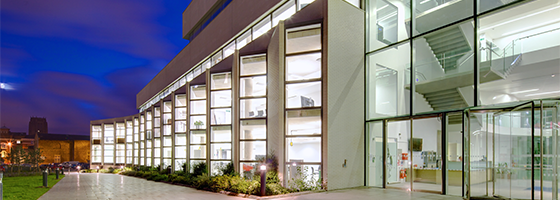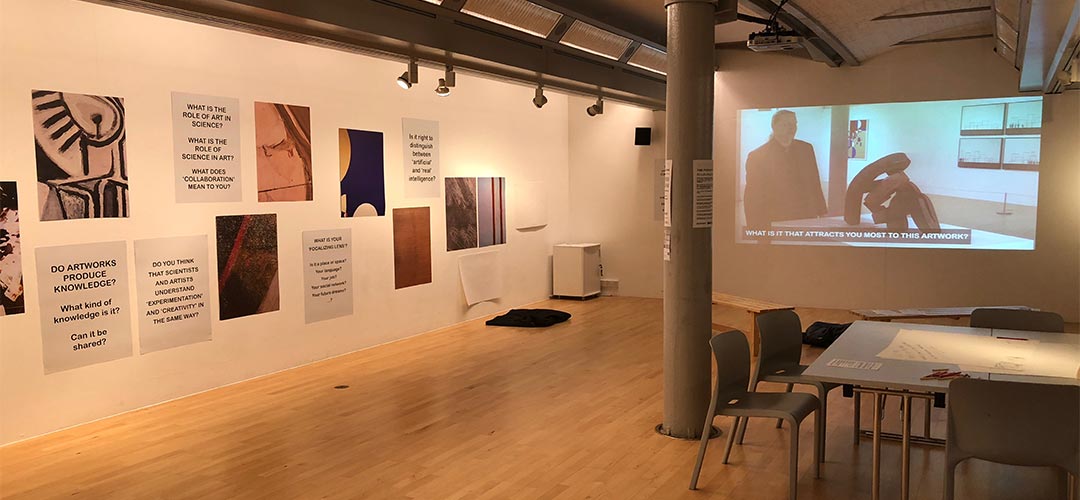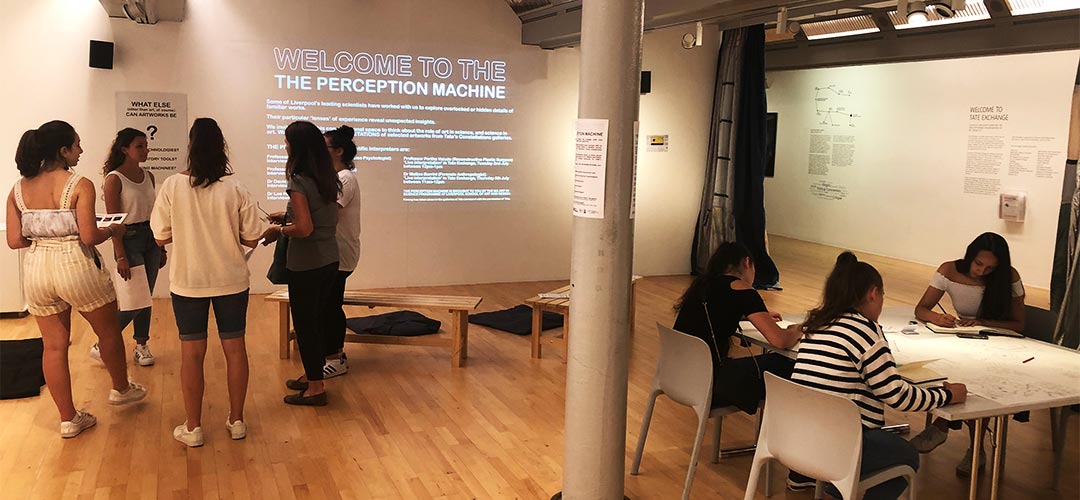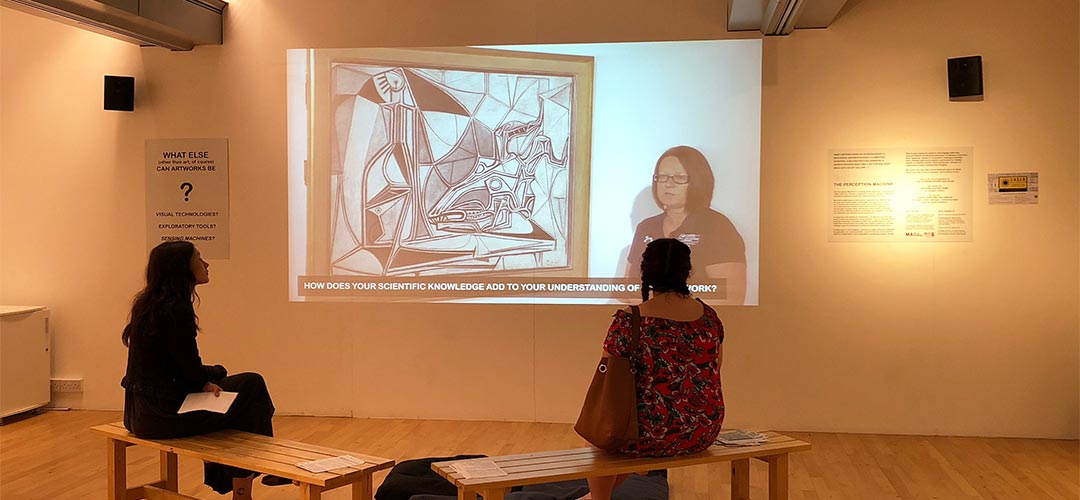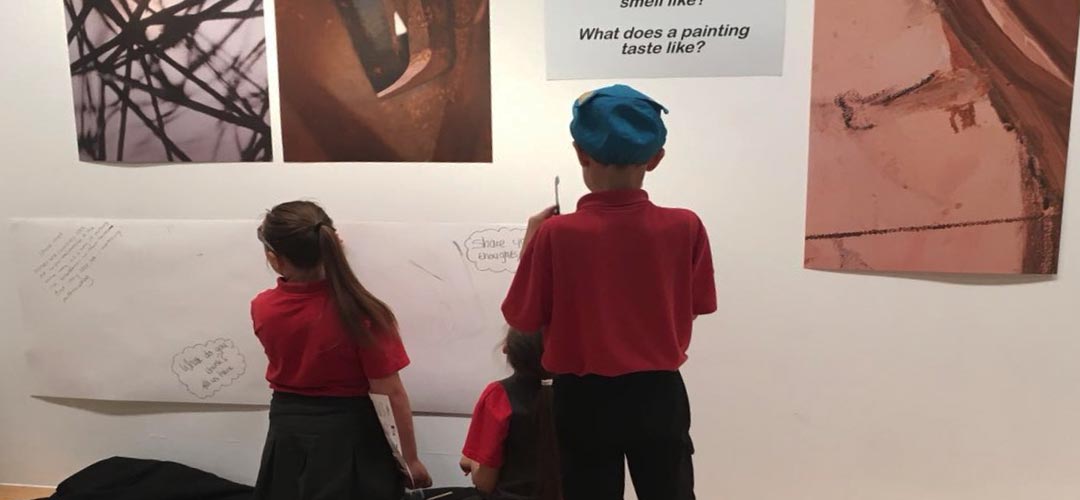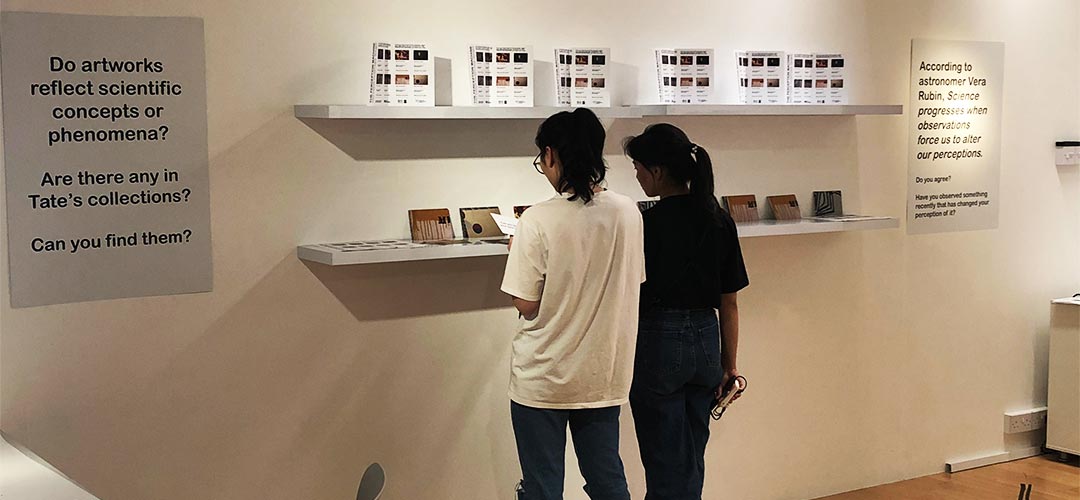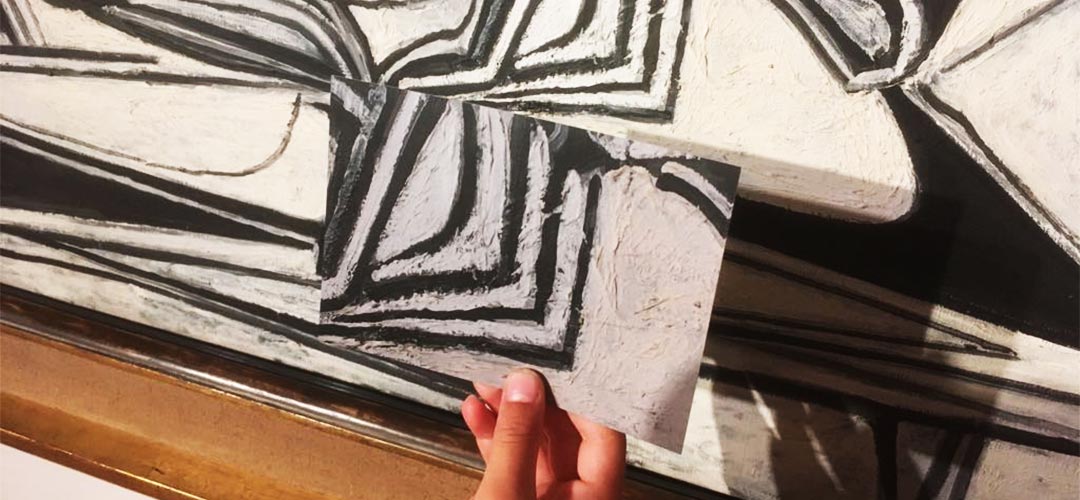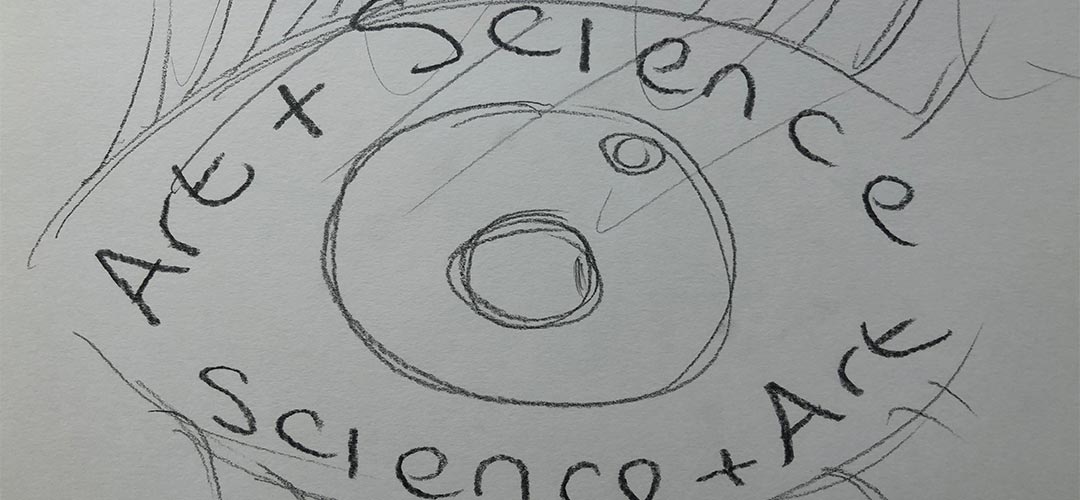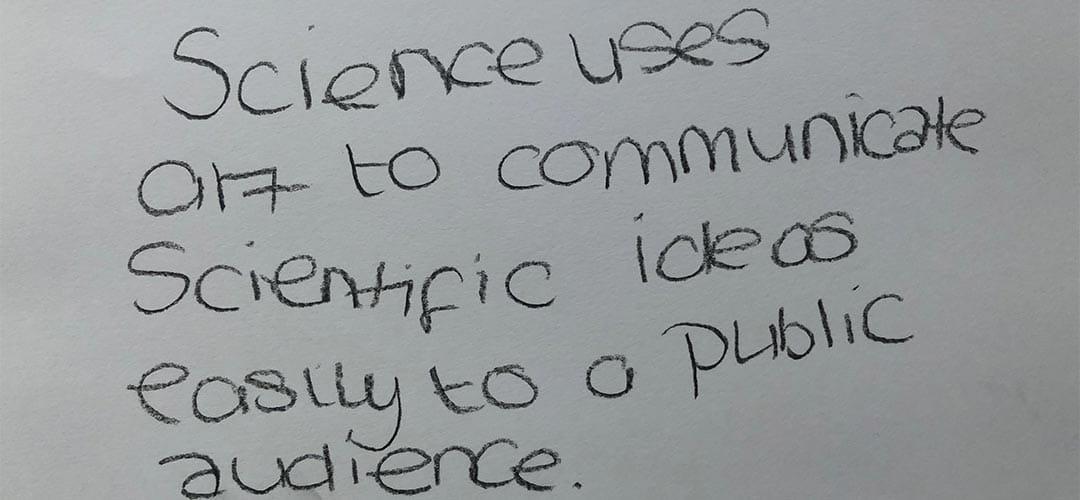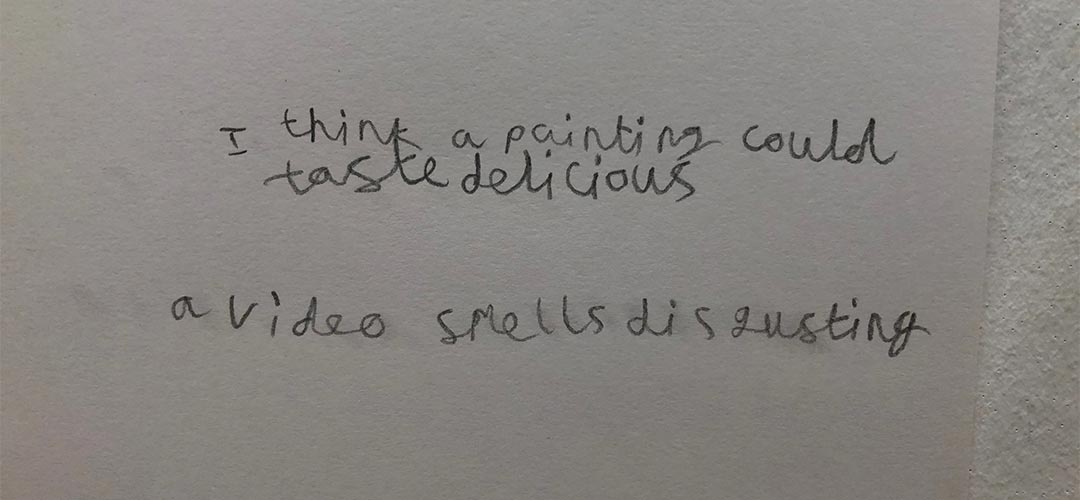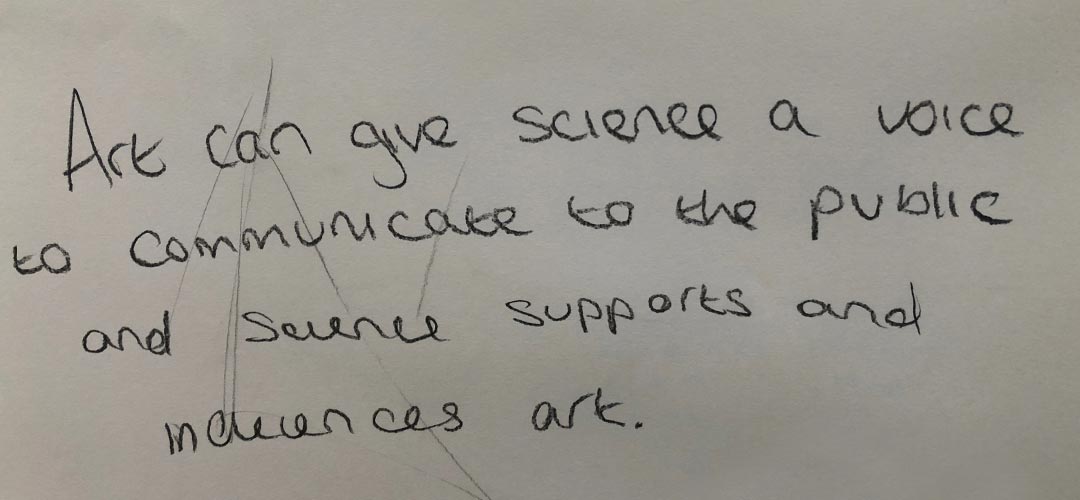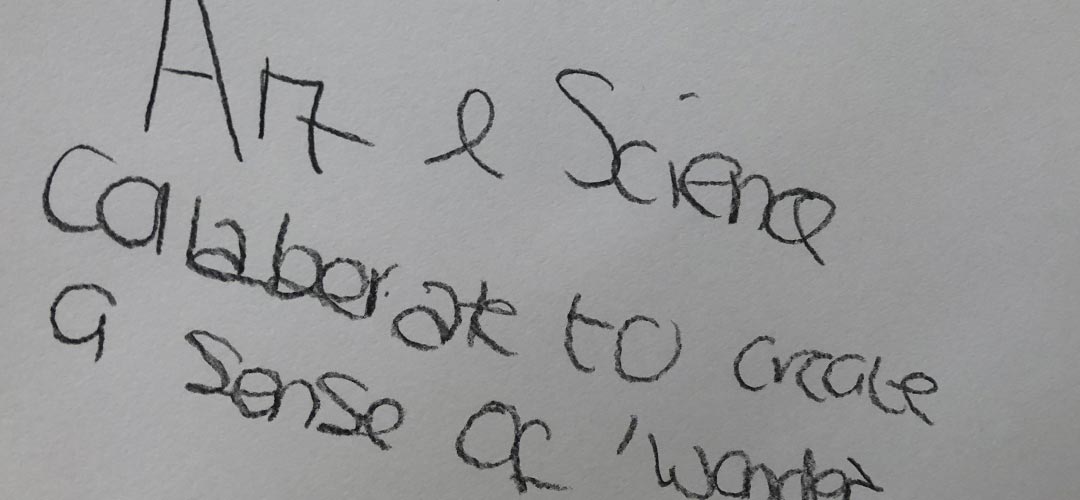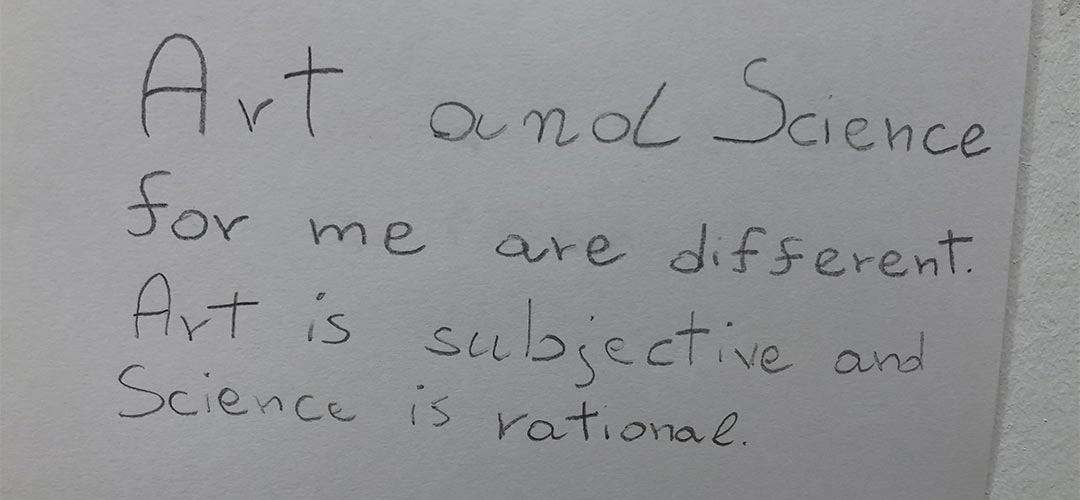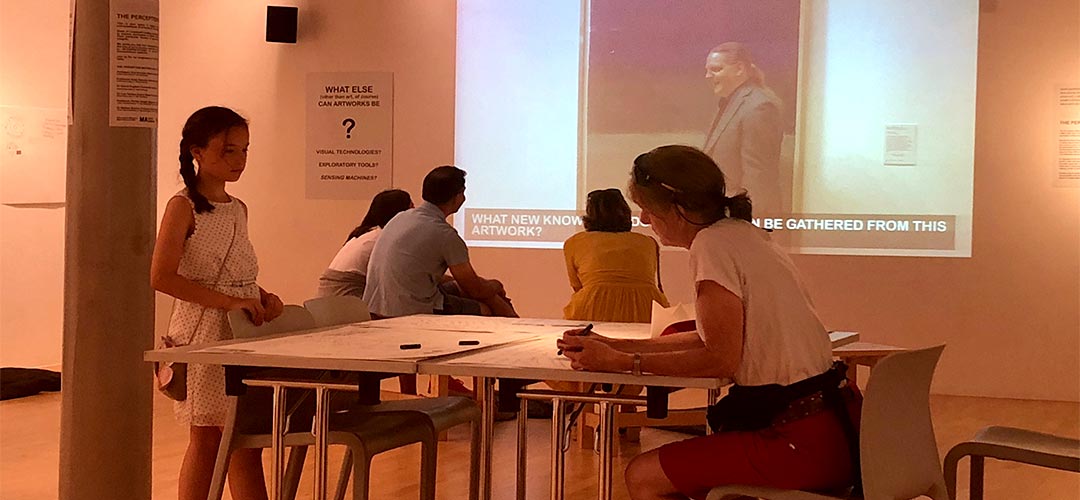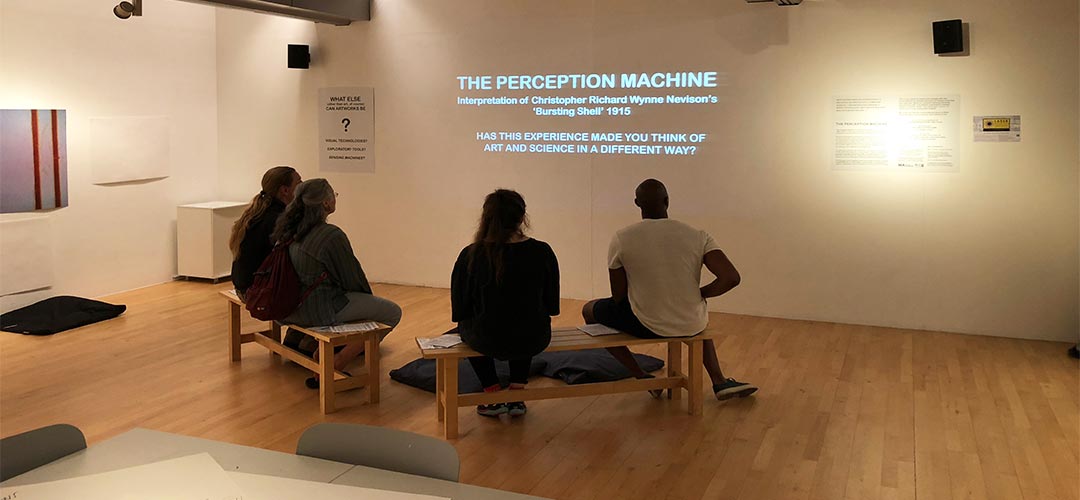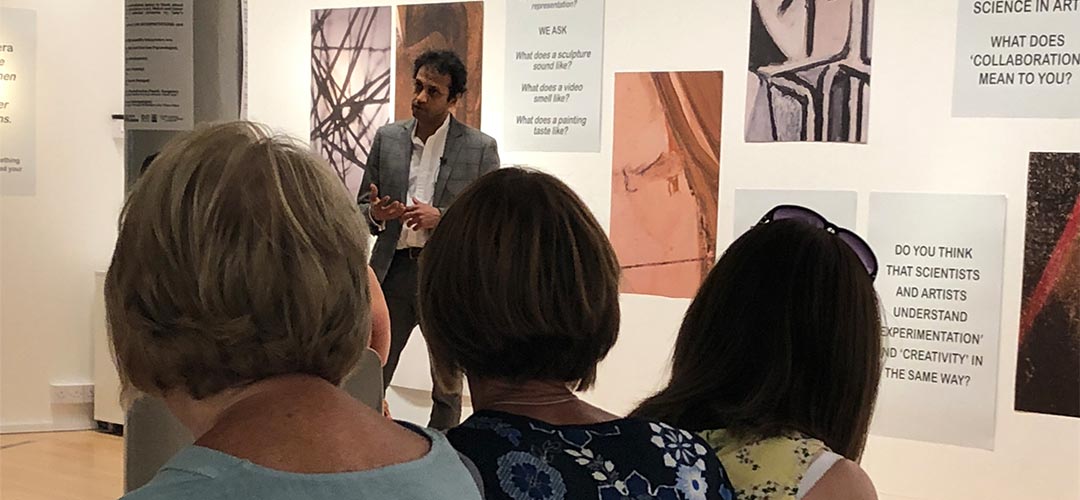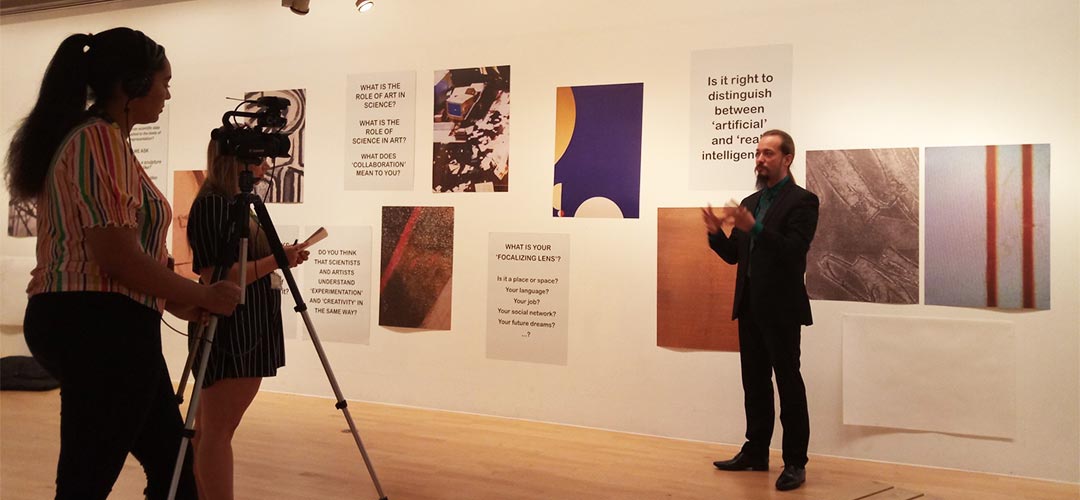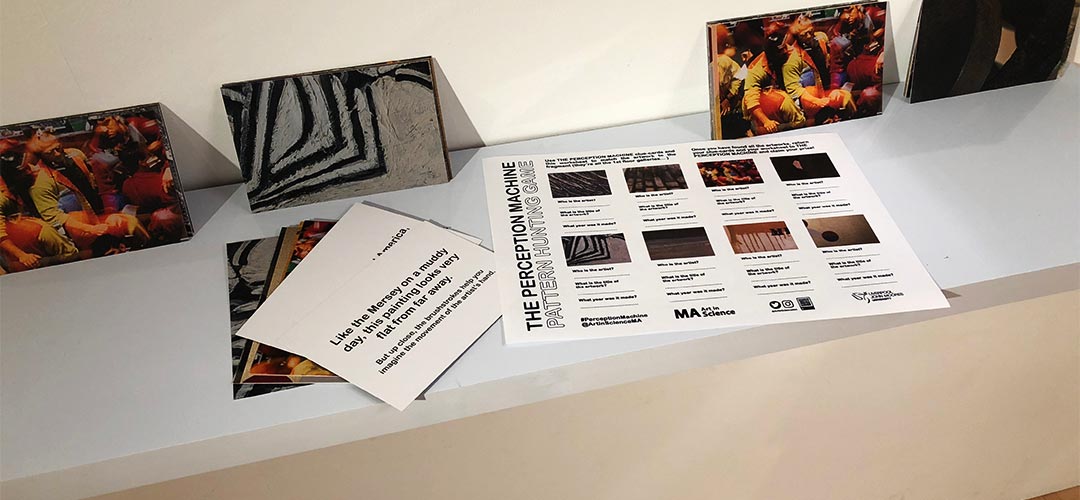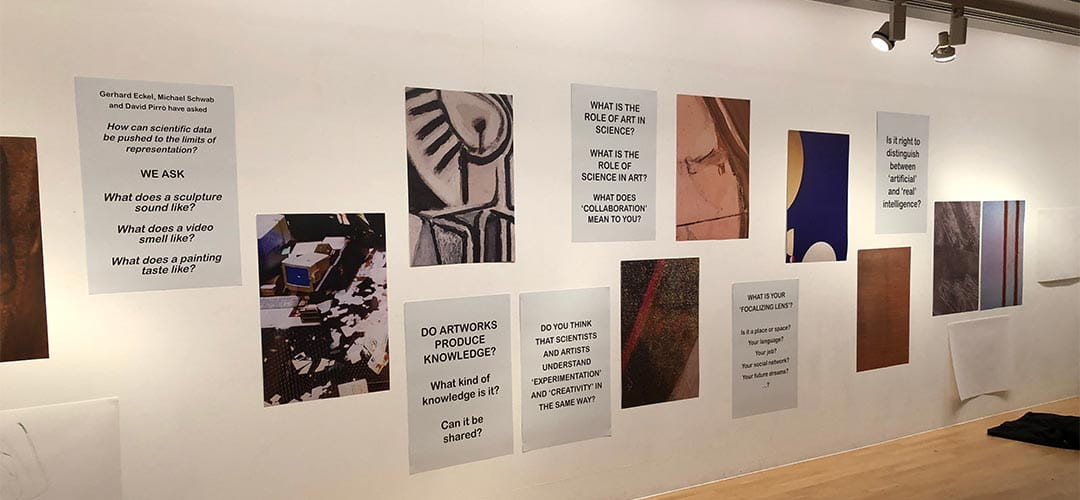The Perception Machine
What does a sculpture sound like? What does a video smell like? How can we understand the physical and emotional sensations that artworks might provoke in us? Can we think of artworks as sensing machines?
The Perception Machine was a week long takeover of Tate Exchange at Tate Liverpool operated by the MA Art in Science programme’s students and staff. It was a space designed to stimulate the imagination and provoke insights into questions such as, what is the role of art in science, and science in art? Do scientists and artists understand ‘experimentation’ and ‘creativity’ in the same way?
Art and Science are popularly considered to represent very separate ideas of what defines ‘knowledge’, yet both art and science make core contributions to our understanding of ourselves within the known universe. How do we understand how these different kinds of knowledge work together, and impact our individual and collective social experience? Finding ways to work together, and how we might make the unfamiliar recognisable and understandable, is part of how we understand the value of collaboration and co-operation.
In response to the Tate Exchange theme of ‘Production’, we took our cue from production’s Latin root producere – ‘to bring forth’ – and we considered three possible meanings: to present or offer; the transformation of raw materials in the practice of a craft; and the inherently collective or collaborative creative endeavours like film-making, music or performance.
We invited the public into a conversational space to explore and engage with new interpretations of selected artworks on display in the first floor galleries and think about the role of art in science, and science in art. Our primary aim was to encourage visitors to consider what the role of art might be in relation to art/science collaboration, specifically, to better understand how art in science makes a difference in how scientists explore and present research, public understanding of scientific concepts, and how art is influenced by science and science is influenced by art.
Related Links
What happens when an astrophysicist, a biological anthropologist, a computer scientist, a vector biologist, a reconstructive surgeon and a sports psychologist walk into an art gallery…?
Some of Liverpool’s leading scientists worked with us to explore overlooked or hidden details of familiar artworks in Tate Liverpool’s Constellations galleries. Their particular ‘lenses’ of experience, revealed unexpected insights. A series of 10 artworks in the Tate Liverpool collection were identified ahead of The Perception Machine and our scientists were recorded providing new interpretations of the selected artworks.
Our scientific interpreters were:
- Professor Zoe Knowles (Sport and Exercise Psychologist) interpreting Pablo Picasso’s “Goat’s Skull, Bottle and Candle” 1952 and Cy Twombly’s “Untitled 1” 1967
- Professor Andy Newsam (Astrophysicist) interpreting Mark Rothko’s “Untitled” 1969 and Eduardo Chillida’s “Modulation of Space 1” 1963
- Dr David England (Computer Scientist) interpreting Andreas Gursky’s “Chicago Board of Trade II” 1999 and Gabriel Orozco’s “Samurai Tree (invariant 5)” 2005
- Dr Lee Haines (Insect Molecular Biologist) interpreting Christopher Richard Wynne Nevison’s “Bursting Shell” 1915 and Gabriel Orozco’s “Samurai Tree (Invariant 5)” 2005
- Professor Partha Vauide (Reconstructive Plastic Surgeon) interpreting Larry Rivers’ “Parts of the Face: French Vocabulary Lesson” 1961 and Cy Twombly’s “Untitled 1” 1967
- Dr Matteo Borrini (Forensic Anthropologist) interpreting Mark Rothko’s “Untitled” 1969 and Paul Sietsema’s “Documentation of Empire” 2002
Watch and listen to their interpretations here
Filming took place in the galleries at Tate Liverpool with the permission of Tate.
Tate Exchange was transformed into a working studio-laboratory where visitors were encouraged to engage with;
- a programme of live public talks with guest scientists, supported by an audio-visual archive of recorded conversations (scientists interpreting artworks) that visitors accessed during normal gallery opening hours
- magnified views of artworks and questions that were displayed in Tate Exchange with accompanying large sheets of paper for visitors to attempt to answer the questions, and for other visitors to see, consider and contribute to
- a pattern-hunting game for younger visitors (art detective bingo) featuring 10 macroscopic details of each of the selected artworks on numbered grid, and a magnifying glass. Visitors were encouraged to find the artwork by detail alone
- a digital curating experiment where visitors were encouraged to produce their own constellation using Tate’s online catalogue, inspired by ideas from our guest scientists
The Perception Machine also hosted a Liverpool LASER event. The MA Art in Science programme supports Liverpool LASER talks that are part of the worldwide series of Leonardo Art Science Evening Rendezvous (LASER) Talks sponsored by Leonardo, the International Society for Art, Sciences and Technology (Leonardo/ISAST). LASER talks are an international programme of free evening gatherings that bring artists and scientists together for informal presentations and conversations on art, science and technology.
The Perception Machine LASER was targeted at an 18+ audience to allow for expanded discussion on art/science collaboration and new knowledge production, stimulated by presentations from 4 speakers:
- Kathryn Smith (Visual/Forensic artist) Strange attractors, or just a drunken conversation?
- Dr Lee Haines (Liverpool School of Tropical Medicine) Fingers intertwined: the dynamic bond between science and art
- Prof Andy Newsam (Astrophysics Research Institute) Astronomy and Art: Universal Appeal?
- Prof Mike Stubbs (FACT Liverpool) Imagination and uncertainty
Find out more information about Liverpool LASER and see upcoming events
We hoped that the visitor’s journey to The Perception Machine sparked debate and discussion amongst themselves and with our students, allowing the visitor to think about art/science production, practice, research and collaboration in new and unexpected ways. It was hoped that we were able to engage the visitors with the artworks on display in the Constellations galleries in new ways and from new viewpoints, while bringing together artists, scientists and the public together for informal presentations and conversations on art and science.


